At first glance, you might think that snacking should be avoided because of the extra calories they can add to your diet. However, studies have shown there may be benefits when healthy snack choices are made. Read this article to learn about the benefits of healthy snacks and to learn healthy snack shopping tips. Includes recipes for homemade crispy kale chips and peanut butter and jelly yogurt. This four-page fact sheet is the Spanish langauge version of FS279 Shopping For Health: Snack Foods. Written by Carley Rusch and Wendy J. Dahl and published by the Food Science and Human Nutrition Department.
http://edis.ifas.ufl.edu/fs279
Category: Health & Nutrition
Diabetes-Related Websites
Managing diabetes requires learning about your disease, making positive lifestyle choices, and being a partner with your health care team. Finding and using current and reliable sources of health information on the Internet also helps you make choices that support your health while avoiding potentially harmful products and practices. This 1-page fact sheet is a major revision that provides links to government, educational, and recognized professional websites on diabetes. Written by Linda B. Bobroff and Nancy J. Gal, and published by the UF Department of Family, Youth and Community Sciences. Revised May 2016.
http://edis.ifas.ufl.edu/fy1103
Vivir con Diabetes
La diabetes es una enfermedad que afecta a más de 29 millones de estadounidenses. Aunque no existe cura para tipo 1 o tipo 2 diabetes, con los cuidados necesarios se puede controlar la enfermedad.
This 5-page fact sheet is the Spanish version of Living with Diabetes. This major revision provides an overview of diabetes, a list of people at high risk of developing the disease, and a description of each type of diabetes. It also discusses tests, possible health problems, control of blood glucose, and diabetes management. Written by Nancy J. Gal and Linda B. Bobroff, and published by the UF Department of Family, Youth and Community Sciences, revised May 2016.
http://edis.ifas.ufl.edu/fy924
Understanding Dietary Supplements
More than half of adults in the United States take at least one dietary supplement. It is important to know in what situations supplements may be effective for improving health and wellness. This three-page fact sheet describes dietary supplements, when to use them, and how to evaluate their safety and efficacy. Written by Daniel Staub and Anne Mathews and published by the Food Science and Human Nutrition Department.
http://edis.ifas.ufl.edu/fs278
Zika Vector Control for the Urban Pest Management Industry
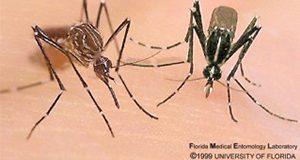
Zika is a mosquito-transmitted virus that has recently spread to the Americas. Zika virus (ZIKV) was discovered in 1946 in Africa where it was isolated from a Rhesus monkey in the Zika forest of Uganda. In 2007, a disease outbreak occurred on the Yap islands in Micronesia, and in 2013, an outbreak occurred in French Polynesia. In 2015, a large outbreak occurred in Brazil, and ZIKV has since spread through the Americas. As of April 18, 2016, 15 counties in the state of Florida had reported travel-associated Zika cases. This seven-page fact sheet provides an overview of ZIKV, including its incidence and distribution, transmission and symptoms, and the connection between zika virus and infant microcephaly. This article also explains the biology and identification of the mosquito that vectors the virus with a focus on how to manage the vector using inspection, larviciding, adulticiding, monitoring, and personal protective equipment. Written by Casey Parker, Roxanne Connelly, Dale Dubberly, Roberto Pereira, and Philip Koehler and published by the Entomology and Nematology Department.
http://edis.ifas.ufl.edu/in1131
Starting a Community Garden
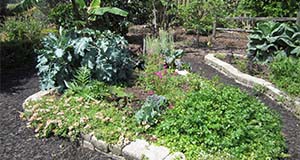
A community garden is a great way to unite a group of people in a common goal. In addition to providing fresh herbs, vegetables, and fruit, community gardens can also increase self-esteem, beautify a neighborhood, and create and opportunity for socializing and improving health. This four-page fact sheet outlines the importance of community gardens and how to develop and manage a community garden. Written by Adrian Hunsberger, Eva C. Worden, and John McLaughlin, and published by the Environmental Horticulture Department.
http://edis.ifas.ufl.edu/ep124
Healthy Eating: Improving Your Convenience Foods
 Convenience foods are foods that require little preparation. Some convenience foods only require heating and are ready to eat in less than five minutes! The majority of convenience foods are processed foods. However, precut, prewashed, frozen, and canned fruits and vegetables also can be classified as convenience foods. They are healthy foods but are usually more expensive than less prepared fresh fruits and vegetables. This 2-page fact sheet is a major revision that discusses pros and cons of convenience foods, improvement of nutritional quality, common convenience foods and easy additions, and additional tips. Written by Emily Minton and Linda B. Bobroff, and published by the UF Department of Family, Youth and Community Sciences, revised March 2016.
Convenience foods are foods that require little preparation. Some convenience foods only require heating and are ready to eat in less than five minutes! The majority of convenience foods are processed foods. However, precut, prewashed, frozen, and canned fruits and vegetables also can be classified as convenience foods. They are healthy foods but are usually more expensive than less prepared fresh fruits and vegetables. This 2-page fact sheet is a major revision that discusses pros and cons of convenience foods, improvement of nutritional quality, common convenience foods and easy additions, and additional tips. Written by Emily Minton and Linda B. Bobroff, and published by the UF Department of Family, Youth and Community Sciences, revised March 2016.
http://edis.ifas.ufl.edu/fy1312
School Gardens: A Growing Part of Schools
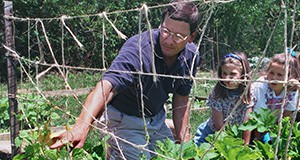
School gardens have been popping up like little pea plants in schools all over Florida. Not only are they an excellent way to get fresh produce into classrooms and cafeterias, but they also provide students with a living classroom where concepts related to science, math, agriculture, and nutrition can be learned and applied. This 4-page fact sheet discusses the benefits of school gardens to children and teachers, different types of school gardens, and points to consider while planning. Written by Kohrine Counts and Karla P. Shelnutt, and published by the UF Department of Family, Youth and Community Sciences, February 2016.
http://edis.ifas.ufl.edu/fy1463
Tong Hao: an Asian Vegetable Emerging in Florida
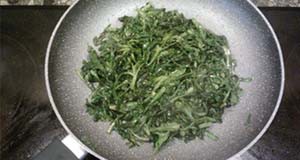
Tong Hao (Glebionis coronaria) is a member of the daisy family and therefore a relative of lettuce. It is an important vegetable in Asian communities. Grown in China for more than 900 years, Tong Hao is a branched annual leafy herb that can be cooked and eaten. This four-page fact sheet provides background information about Tong Hao, including information on growing, harvesting, and cooking it. Written by Guodong Liu, Qingren Wang, Bonnie Wells, Yuncong Li, and David Dinkins, and published by the Horticultural Sciences Department.
http://edis.ifas.ufl.edu/hs1276
Pureed Food: Guide to Quick Meals
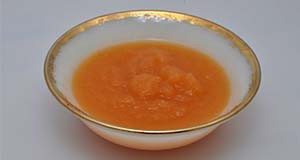
Puréed foods are an important source of nutrients for those who have problems chewing or swallowing. A puréed food is any item that has been processed into a smooth and uniform texture and therefore does not require chewing. Purées can be made from most foods and this guide provides some tips for fast and easy to prepare puréed foods. This four-page fact sheet covers the preparation of puréed foods from canned vegetables and fruits; beans, peas, and lentils; and mixed dishes. It also provides a useful example meal plan. Written by Wendy J. Dahl, and published by the Food Science and Human Nutrition Department.
http://edis.ifas.ufl.edu/fs277
Facts about Wildlife Diseases: Leprosy
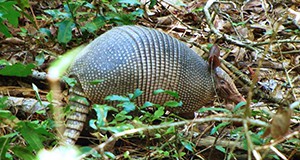
Worldwide, 250,000 new cases of leprosy are reported each year, and in the United States, approximately 150 new cases of leprosy are diagnosed each year. Also known as Hansen’s disease, leprosy (Mycobacterium leprae) is a bacterial disease that infects the skin and nerves, causing disfiguring skin sores, nerve damage, and occasionally lung damage if left untreated. Leprosy is spread between humans via respiratory droplets when people sneeze or cough. In the southeast United States, handling armadillos is thought to be the source of many infections. This 4-page fact sheet written by Shannon P. Moore and Samantha M. Wisely and published by the Wildlife Ecology and Conservation Department describes the disease in humans and armadillos and explains how to avoid it and limit its spread.
http://edis.ifas.ufl.edu/uw408
Datos sobre la proteina
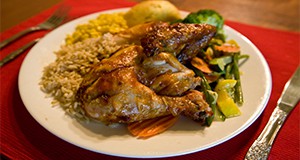 Our bodies are made of many proteins. They can make 11 of the amino acids that are needed to make protein but cannot make the other nine, so we must get them from our diet. This 3-page fact sheet is the Spanish version of Facts about Protein (FSHN15-01/FS261). It provides an overview of protein basics, roles of proteins in the body, recommended intake, sources of protein, and healthier protein choices. Written by Nicole C. Agro and Wendy J. Dahl, and published by the UF Department of Food Science and Human Nutrition.
Our bodies are made of many proteins. They can make 11 of the amino acids that are needed to make protein but cannot make the other nine, so we must get them from our diet. This 3-page fact sheet is the Spanish version of Facts about Protein (FSHN15-01/FS261). It provides an overview of protein basics, roles of proteins in the body, recommended intake, sources of protein, and healthier protein choices. Written by Nicole C. Agro and Wendy J. Dahl, and published by the UF Department of Food Science and Human Nutrition.
http://edis.ifas.ufl.edu/fs272
Why We Should Be Concerned about Methicillin-Resistant Staphylococcus aureus (MRSA)
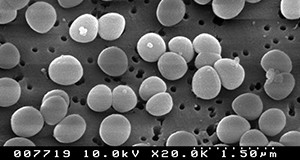 Treatment and complete resolution of MRSA infections can be extremely challenging, since many MRSA strains are multidrug-resistant. This 6-page fact sheet provides an overview of MRSA, different strains, risk factors, symptoms, prevention, and the pathogen’s effects on human health and agriculture. Written by Austin B. Mogen and Kelly C. Rice, and published by the UF Department of Microbiology and Cell Science, September 2015.
Treatment and complete resolution of MRSA infections can be extremely challenging, since many MRSA strains are multidrug-resistant. This 6-page fact sheet provides an overview of MRSA, different strains, risk factors, symptoms, prevention, and the pathogen’s effects on human health and agriculture. Written by Austin B. Mogen and Kelly C. Rice, and published by the UF Department of Microbiology and Cell Science, September 2015.
http://edis.ifas.ufl.edu/mb006
Breast Cancer: Preparing for Surgery
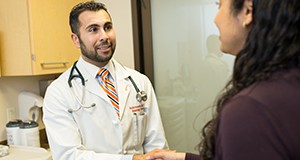 Once you and your doctor schedule your breast cancer surgery, you may have additional questions about how you can prepare for your operation. This 5-page fact sheet provides information to help you get ready for breast cancer surgery through a brief overview of common surgical options, medical appointments, social support systems, and standard surgical procedures as well as reactions and memories of women who have gone through this experience. Written by Martha C. Monroe and Barbara F. Shea, and published by the UF Department of Family, Youth and Community Sciences. Revised February 2016.
Once you and your doctor schedule your breast cancer surgery, you may have additional questions about how you can prepare for your operation. This 5-page fact sheet provides information to help you get ready for breast cancer surgery through a brief overview of common surgical options, medical appointments, social support systems, and standard surgical procedures as well as reactions and memories of women who have gone through this experience. Written by Martha C. Monroe and Barbara F. Shea, and published by the UF Department of Family, Youth and Community Sciences. Revised February 2016.
http://edis.ifas.ufl.edu/fy899
Zika, a Mosquito-Transmitted Virus
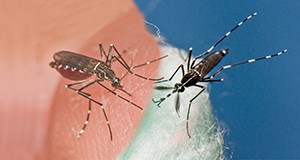
Zika is a mosquito-transmitted virus that has spread broadly in tropical regions and caused epidemics, especially in the past 8 to 9 years. In its native range in West Africa and Uganda, the Zika virus stays in the forest for the most part, and human infections are considered incidental and medically inconsequential. In 2015, however, Zika became a larger concern when a strain of the virus traced to outbreaks in French Polynesia emerged in northeastern Brazil. This strain provoked alarm because of increased incidence of microcephaly in babies born to Zika-infected mothers. Local transmission, mainly by the yellow fever mosquito Aedes aegypti, has now been documented in most tropical countries of the Americas but has not yet been detected in the continental United States. This 7-page fact sheet written by L. P. Lounibos, B. W. Alto, N. D. Burkett-Cadena, C. C. Lord, C. T. Smartt, C. R. Connelly, and J. R. Rey and published by the Department of Entomology and Nematology describes the Zika microbe, its mosquito hosts, and the disease it causes. A history of the virus and its migration are included, along with some details about the virus in the state of Florida and preventative measures people can take to avoid infection. The best way to avoid contracting Zika (and other mosquito-borne diseases) is not to get bitten in the first place. Take precautions to avoid mosquito bites.
http://edis.ifas.ufl.edu/in1120
See also 2/9/2016 press release:UF/IFAS scientists write document explaining Zika virus; urge vigilance.
El Zika, un Virus Transmitido por Mosquitos

Zika es un virus transmitido por mosquitos que se ha esparcido recientemente en regiones tropicales y ha causado epidemias, especialmente durante los últimos 8 o 9 años. En su ámbito nativo en África Occidental y Uganda, el virus se mantiene en los bosques, circulando entre mosquitos que viven en huecos de árboles y primates arbóreos; las infecciones de humanos se consideran incidentales y de poca importancia médica. Una cepa del virus que se implicó en brotes en Polinesia Francesa emergió en el Norte de Brasil en el 2015 y causó gran consternación debido a la alta incidencia de microcefalia en bebes nacidos de madres que fueron infectadas con el virus durante la gestación. Transmisión local, principalmente por el mosquito de la fiebre amarilla Aedes aegypti, ha sido documentada en la mayoría de los países tropicales de las Américas, pero aún no se ha detectado en Los Estados Unidos Continentales. Los síntomas de la infección incluyen, salpullido, dolor de cabeza, fiebre, dolor muscular y en las coyunturas, conjuntivitis, y malestar general.
This 7-page fact sheet written by J. R. Rey, L. P. Lounibos, B. W. Alto, N. D. Burkett-Cadena, C. C. Lord, C. T. Smartt, and C. R. Connelly and published by the Department of Entomology and Nematology is the Spanish language version of Zika, a Mosquito-Transmitted Virus and describes the Zika microbe, its mosquito hosts, and the disease it causes. A history of the virus and its migration are included, along with some details about the virus in the state of Florida and preventative measures people can take to avoid infection. The best way to avoid contracting Zika (and other mosquito-borne diseases) is not to get bitten in the first place. Take precautions to avoid mosquito bites.
http://edis.ifas.ufl.edu/in1121
Pureed Foods: Texture Testing with the Slump Test
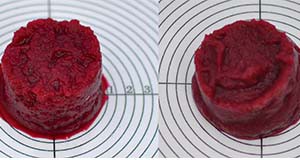
For individuals with dysphagia, the texture of puréed foods is extremely important. If the puréed foods are either too thick or too thin, it can make it more difficult to swallow. The slump test is a quick, easy, and inexpensive way to assess the texture of foods. This four-page fact sheet describes the slump test, how to perform a slump test, and how the slump test can be used to evaluate the texture of puréed foods. Written by Wendy J. Dahl, and published by the Food Science and Human Nutrition Department.
http://edis.ifas.ufl.edu/fs276
Healthy Living: Reliable Websites
 The number of resources available online grows every day. Unfortunately, there are no regulations to ensure that the information on these websites is accurate. Older adults can readily access reliable information on the Internet by focusing on government and education sites. This 2-page fact sheet is a major revision that provides a list of trustworthy Internet sources related to nutrition, health, food safety, and general interest for older adults. Written by Linda B. Bobroff and Leigh Ann Martin, and published by the UF Department of Family, Youth and Community Sciences, revised January 2016.
The number of resources available online grows every day. Unfortunately, there are no regulations to ensure that the information on these websites is accurate. Older adults can readily access reliable information on the Internet by focusing on government and education sites. This 2-page fact sheet is a major revision that provides a list of trustworthy Internet sources related to nutrition, health, food safety, and general interest for older adults. Written by Linda B. Bobroff and Leigh Ann Martin, and published by the UF Department of Family, Youth and Community Sciences, revised January 2016.
http://edis.ifas.ufl.edu/fy102
De Compras Para la Salud: Mariscos

El marisco es un término general para todo tip de pescados y mariscos (USDA 2010). Los mariscos son parte del “grupo de alimentos de proteína” de MyPlate y también proporciona otros nutrientes necesarios para una buena salud (USDA 2011). Como hay muchos beneficios para la salud associados con la inclusión de los mariscos en la dieta, se recomienda que los adultos consuman al menos ocho onzas de una variedad de mariscos cada semana. Mientras que comer más mariscos se recomienda como parte de una dieta saludable, es importante tener en cuenta su presupuesto al hacer compras de mariscos. Este artículo explica los beneficios para la salud de los mariscos y ofrece algunas estrategias para ahorrar dinero para hacer los mariscos más asequible. This four page fact sheet is the Spanish language version of http://edis.ifas.ufl.edu/fs247, written by Michelle Brown and Wendy J. Dahl, and published by the Food Science and Human Nutrition Department.
http://edis.ifas.ufl.edu/fs275
School Garden: Plastic Wading Pool Hydroponics
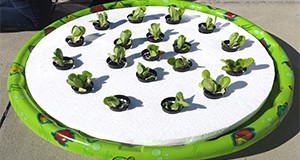 School gardens are a great way to get youth interested in where their food comes from. Hydroponics, or the cultivation of plants in liquid nutrient solutions rather than in soil, is a fascinating way to teach students about food systems. This 4-page fact sheet lists the materials, tools, and construction steps needed to grow a variety of crops in a wading pool hydroponic garden. Written by Edmund L. Thralls, and published by the UF Department of Environmental Horticulture, October 2015.
School gardens are a great way to get youth interested in where their food comes from. Hydroponics, or the cultivation of plants in liquid nutrient solutions rather than in soil, is a fascinating way to teach students about food systems. This 4-page fact sheet lists the materials, tools, and construction steps needed to grow a variety of crops in a wading pool hydroponic garden. Written by Edmund L. Thralls, and published by the UF Department of Environmental Horticulture, October 2015.
http://edis.ifas.ufl.edu/ep525


